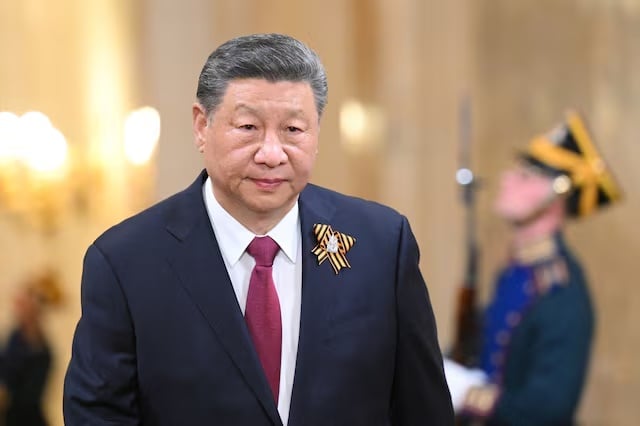- Women’s World Cup games moved out of Bengaluru months after tragedy France 24
- Revised schedule confirmed for ICC Women’s Cricket World Cup ICC
- Women’s World Cup: Navi Mumbai replaces Bengaluru as fourth Indian venue ESPNcricinfo
- Chinnaswamy Stadium Dropped, Navi Mumbai’s DY Patil To Host 2025 Women’s World Cup Games; Here’s Why Zee News
- BCCI announces revised schedule for Women’s ODI World Cup 2025 matches, shifts Bengaluru matches to new venues: Check details MSN
Blog
-
Women's World Cup games moved out of Bengaluru months after tragedy – France 24
-
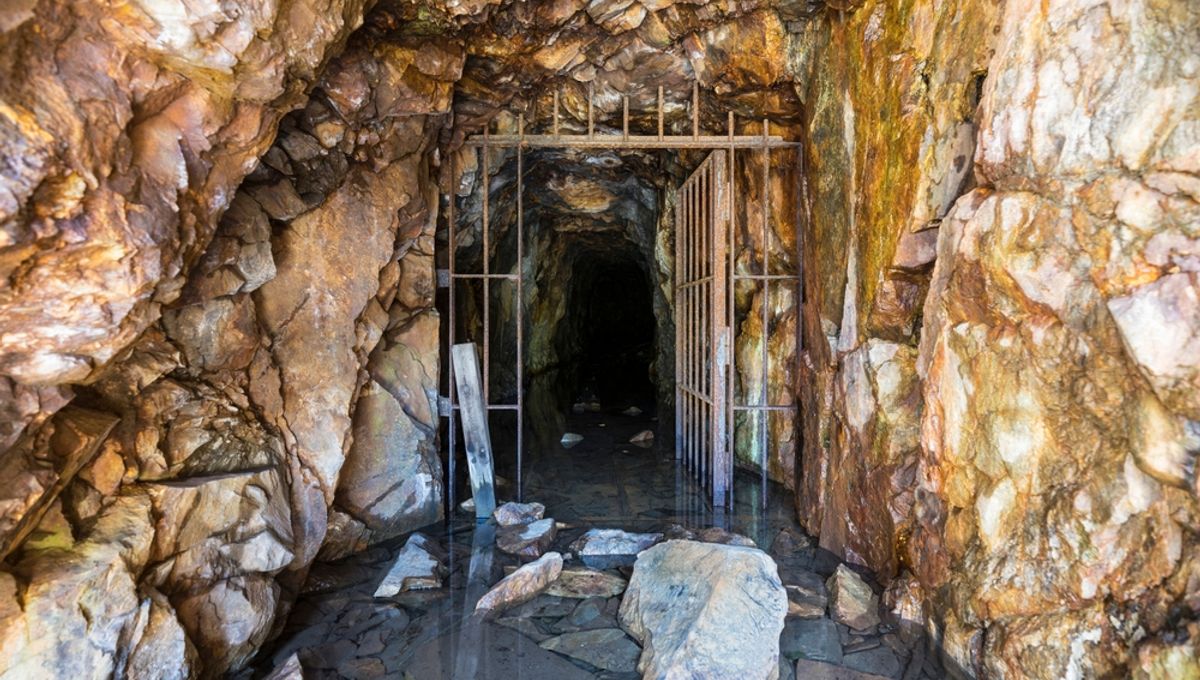
A Geologist Discovered The World’s Oldest Water Deep In A Mine, Then She Tasted It
Back in 2016, deep inside a Canadian mine, geologists stumbled upon something extraordinary. At nearly 3 kilometers (1.8 miles) below the surface, they found water that had been sealed away for up to 2.64 billion years, the oldest known water on Earth.
The rest of this article is behind a paywall. Please sign in or subscribe to access the full content.
“When people think about this water they assume it must be some tiny amount of water trapped within the rock,” Professor Barbara Sherwood Lollar, who led the team, told BBC News. “But in fact it’s very much bubbling right up out at you. These things are flowing at rates of liters per minute – the volume of the water is much larger than anyone anticipated.”
The team found traces that indicated life had once been present within the water.
“By looking at the sulphate in the water, we were able to see a fingerprint that’s indicative of the presence of life. And we were able to indicate that the signal we are seeing in the fluids has to have been produced by microbiology – and most importantly has to have been produced over a very long time scale. The microbes that produced this signature couldn’t have done it overnight,” Sherwood Lollar said. “This has to be an indication that organisms have been present in these fluids on a geological timescale.”
Without light, the microbes survived using substrates produced from radiation.
“The sulfate in this ancient water is not modern sulfate from surface water flowing down. What we’ve found is that the sulfate, like the hydrogen, is actually produced in place by reaction between the water and rock,” Long Li, assistant professor in the University of Alberta’s Department of Earth and Atmospheric Sciences, said in a press release. “What this means is that the reaction will occur naturally and can persist for as long as the water and rock are in contact, potentially billions of years.”
While the discovery had implications for finding life elsewhere on Earth as well as out there in the Solar System, what everyone on the Internet always wants to know is: what does the forbidden drink taste like? Amazingly, we have an answer for that.
“If you’re a geologist who works with rocks, you’ve probably licked a lot of rocks,” Sherwood Lollar told CNN. While not a rock, she still gave the water a try, tasting it off her finger. She was looking for a salty taste, with saltier water tending to be older. Much to her delight, the water was “very salty and bitter” and “much saltier than seawater.” This isn’t altogether surprising, given that it had been aged for over 2 billion years.
The paper was published in Nature back in 2016.
An earlier version of this article was published in June 2023.
Continue Reading
-

Japanese amateur boxer in intensive care after latest incident
TOKYO:A Japanese amateur boxer underwent brain surgery two weeks ago and has not regained consciousness, authorities said on Friday, as the sport in the country reels from the deaths of two professional fighters.
The Japan Boxing Federation (JBF) said the unnamed 39-year-old became unresponsive after sparring for three rounds at three minutes each in Tokyo on August 8.
He was rushed to hospital and underwent emergency surgery, and is still in intensive care.
The JBF, which oversees amateur boxing in Japan, said the man had not fought a match for over 10 years and had been in training to make a comeback.
“We are praying he recovers as quickly as possible,” said JBF president Tatsuya Nakama.
Japanese boxing is under the spotlight after super featherweight Shigetoshi Kotari and lightweight Hiromasa Urakawa, both 28, died days after injuries sustained in separate bouts in Tokyo on August 2.
Japanese boxing officials have held a series of emergency meetings and vowed to introduce new safety rules.
New measures to be implemented include urine tests for measuring dehydration and stricter rules on boxers’ rapid weight loss.
Japanese boxer Yudai Shigeoka announced his retirement this month to support his brother, who has been in a coma since a bout in May.
Former WBC strawweight champion Shigeoka’s brother Ginjiro collapsed after a fight in Osaka and underwent emergency brain surgery.
The 25-year-old remains in a coma but is no longer in a life-threatening condition, the Japan Boxing Commission says.
Continue Reading
-

Pancreaticoduodenal Resection in a Patient on Hemodialysis, First Expe
Introduction
Chronic renal failure is a progressive condition commonly caused by hypertension, diabetes mellitus, glomerulonephritis, drug toxicity, or heavy metal exposure. In critical renal dysfunction, such patients need dialysis that severely limit the applicability of abdominal surgery. However, recent advances in surgical treatment and perioperative care greatly improved survival outcomes in these patients.1,2 Therefore, these patients are much more likely to undergo surgery for other diseases, including major abdominal surgery.3,4 Nevertheless, those who have been diagnosed with end-stage renal disease (ESRD) remain at elevated risk of cardiovascular complications and may also have impaired immune system and coagulation, which significantly affect recovery from major abdominal surgery.5,6 As a result, a significant proportion of end-stage renal failure patients subjected to various non-elective abdominal surgeries die due to peri- and post-operative bleeding complications.7 The ESRD as a comorbidity is associated with twice longer in-hospital stay and 2-to-3 times higher peri- and post-operative mortality in patients subjected to endovascular aneurysm repair.8 In patients with ESRD, which have hemodialysis or hemofiltration and were subjected to laparoscopic ventral hernia repair, the risk of post-operative pneumonia and sepsis was significantly higher.9 However, in selected ESRD patients with carefully evaluated post-operative risks, the outcomes of laparoscopic abdominal surgery may be beneficial.10 In addition, the post-operative outcomes and complications may depend on the preceding history of hemodialysis. For example, one report showed that three patients with ESRD and having dialysis for (on average) >7 years may survive the surgery, while one of the patients died 21 months later from another disease.11 Nevertheless, the considerations about overall risk are likely contributing to persisting reluctance of using major abdominal surgery in such patients.
In the Central Asia, the applicability of this surgical approach for such specific patients is extremely limited due to the high risk of negative outcomes and, in particular, because of the lack of highly experienced surgeons as well as due to the difficulties related to the transportation of dialysis patients to the clinical setting. This report presents the case of a 71-year-old female supported by hemodialysis and diagnosed with pancreatic head cancer who had severe comorbidities (diabetes mellitus type 2, chronic hypertension, chronic kidney disease), and who underwent a successful pancreaticoduodenectomy.
Case Presentation
The 71-year-old female patient of Kazakh nationality was admitted to the surgical department of National Scientific Medical Center, Astana, Kazakhstan, complaining of prolonged nausea, vomiting after eating or drinking, persistent thirst, unstable hemodynamics, and a weight loss of 20 kg in the past month. Urine output was 200–300 mL/day indicating oliguria. Hyperglycemia episodes and general weakness were noted. The patient was on permanent dialysis for approximately 5 years before treatment.
Abdominal CT scans (Figure 1) showed the following: i) hepatomegaly, ii) dilation of common bile duct up to 22.9 mm wide, intrahepatic ducts up to 8.2 mm wide, iii) mass in the head of the pancreas sized 4.7×3.3 × 3.8 cm, iv) Wirsung Stasis (Wirsung duct up to 7.7 mm wide), v) chronic atrophic pancreatitis, vi) pancreatic cysts up to 6.6 mm in diameter, and vii) cysts of both kidneys, 10.0 mm and 8.0 mm in diameter on the right and left, respectively. Stenosis of the renal arteries on both sides was found. Percutaneous transhepatic cholangiostomy was performed.
Figure 1 Preoperative imaging findings (CT, July 2024). Abdominal CT revealed a mass in the head of the pancreas measuring 4.7×3.3 × 3.8 cm, with signs of local invasion and compression of the surrounding structures (shown as the yellow contour). (A) – axial CT plane, (B) – frontal CT plane.
Past medical history revealed insulin-dependent diabetes mellitus. Also, chronic kidney disease (CKD), diabetic nephropathy, arterial hypertension were present for 19 years. Laboratory tests showed that creatinine level was at 1171.30 μmol/L (the normal range for females is 49 to 90 μmol/L). There was also anemia with hypocalcemia: erythrocytes – 2.35 × 1012/L, hemoglobin – 71.00 g/L, calcium level in blood plasma – 1.8 mmol/L.
A consultation was held, and a decision was made to perform surgical treatment for vital indications. In the preoperative period, two hemodialysis sessions were performed four and two days before surgery. Also, taking into account the remarkable anemia (hemoglobin – 71 g/L), a transfusion of one dose of washed red blood cells (Blood Component, 260 mL) four days before surgery and just after hemodialysis session was performed. The day before the operation, the results were the following: erythrocytes 2.91 × 1012/L, hemoglobin – 87.00 g/L, creatinine – 542.78 μmol/L.
The patient was taken for surgery. Laparotomy and revision were performed. During revision, the tumor of the head of the pancreas was up to 4.0 × 3.0 × 3.0 cm. Taking into account the preoperative and intraoperative data, the situation corresponded to a malignant neoplasm of the head of the pancreas. Pancreaticoduodenectomy was performed. The duration of surgery was 280 minutes and it went without complications.
On the next day after surgery, control blood tests were taken. Creatinine level was 364.02 µmol/L, hemodialysis was recommended. During the postoperative period, the levels of glucose and electrolytes were carefully monitored. The patient was receiving the following treatment: antibacterial therapy (meropenem 500 mg twice a day), gastroprotective therapy (omeprazole 40 mg intravenously), anticoagulation therapy (enoxaparin injection i.p. 40 mg), parenteral feeding, pain management and correction of electrolyte abnormalities, which were strictly monitored by taking arterial blood gas and electrolyte analysis four times a day. In the early postoperative period, mild hyponatremia was observed, which was corrected by the administration of 10% sodium chloride (200 mL). The patient’s blood pressure was strictly monitored, in perioperative period patient received oral moxonidine and bisoprolol under pulse and blood pressure control.
Taking into account the patient’s stage 5 chronic kidney disease, chemotherapy was contraindicated, and patient did not receive it. Hypoproteinemia with total protein level of 46.99 g/L was noted in the postoperative period, and therefore albumin transfusion was performed. Taking into account the anemia conditions (erythrocytes – 2.70 1012/L, hemoglobin – 81.00 g/L, hematocrit – 24.70%), a blood transfusion was performed. Hemodialysis was performed 3 days before the operation, and then three hemodialysis sessions were performed in the postoperative period: 2nd, 9th, and 13th days after the operation. Intestinal function was restored on the 5th day after the operation, early enteral nutritional support was performed through a jejunostomy. Electrolytes were normalized on the 10th day, the hemoglobin level has reached 96 g/L, and there were no indications for blood transfusion; creatinine level was 546.20 μmol/L by the time of discharge. The patient was discharged on day 14 post-surgery in a satisfactory condition for further outpatient treatment.
Final histopathology revealed endo-exocrine cancer of the head of the pancreas with ulceration, invasion into the muscular layer of the duodenum, formation of a mucinous cyst, metastasis to regional lymph nodes. The focal erosions were also observed with chronic cholangitis, papillitis, and serous-hemorrhagic omentitis.
Five months later, the patient underwent an MRI of the abdominal organs, which showed soft tissue consolidation in the postoperative area as well as ascites (Figure 2). On 7 months post-operative follow-up, the MRI of the abdominal organs (Figure 3) revealed negative dynamics due to multiple focal liver lesions, most likely metastatic (mts). Significant ascites persisted. By summer 2025, the patient was alive according to the available information in national healthcare registry, but we were unable to perform diagnostic observations for further complications as well as progression of the oncological lesions.

Figure 2 MRI follow-up 5 months postoperatively (February 2025). Findings indicate soft tissue consolidation in the postoperative area. Ascites is also noted.

Figure 3 MRI follow-up 7 months postoperatively (the end of April, 2025). Findings indicate negative dynamics due to multiple focal liver lesions, most likely metastatic (mts, shown by yellow pointers). Significant ascites persists.
Discussion
The number of patients with end-stage renal disease (ESRD) who need the long-term dialysis has been increasing in recent years.12 The most important chronic diseases that contribute to the increase are diabetes mellitus,13,14 CKD,15 and hypertension16 – the prevalence for all these diseases is steadily increased worldwide. This substantiate that the number of major surgical treatments in the patients requiring dialysis has also significantly increased.
The concomitant and/or post-operative complications are greatly affecting the outcome of surgical treatment in these patients. Among the most affecting, one would list cardiovascular complications, dysfunctions in vascular system resulting in hypo- and hypertension, diabetes mellitus, disorders in blood system, and disorders in immune responses.17,18 ESRD patients have coagulation disorders associated with uremic platelet, fibrinogen, and thrombin dysfunction,19,20 and are thus susceptible to bleeding. Immune function impairments like immune senescence and chronic inflammation are also occurring as the total amount of lymphocytes and phagocytes may change in parallel with the alterations in their activity.21 This leads to an increased risk of post-surgical infection and inflammation. In addition, the complications of pulmonary system may develop at higher risk.22,23 For example, the patients on hemodialysis have a higher incidence of complications in the postoperative period, in particular myocardial infarction, pneumonia, bleeding, septicemia, compared with the control group.24 Also, patients on dialysis have a much higher 30-day postoperative mortality.12 The duration of hospitalization and stay in intensive care are also higher in dialysis patients, partly due to infection-related complications.3,25 The same results were shown in a meta-analysis, where morbidity in the postoperative period was evaluated in the patients on chronic dialysis.18 According to their data, the risk of myocardial infarction and stroke was 2–5 times higher in patients on dialysis, regardless of the type of surgery performed. It has also been found that combined hypertension and diabetes in chronic dialysis patients resulted in higher postoperative risk of stroke, pneumonia, and septicemia, compared to the patients without diabetes or hypertension (but those may have one of the diseases).24 In addition, diabetes mellitus in aged patients provides increased chance of myocardial infarction associated with chronic dialysis compared to younger patients; similarly, the risk of stroke is higher in aged patients with coronary artery disease.3
Collectively, these data show that the presence of non-dialysis comorbidities (eg, diabetes mellitus) in aged patients contribute significantly to the elevated risks of poor outcome of surgical treatment. In other words, dialysis itself is not a dominating factor in perioperative morbidity in these patients.3,18 However, if we consider hepatic and pancreatic surgery, such operations are still rare in ESRD patients.25,26 This may be explained by the concern about operative and perioperative risks in such patients.27 Despite the improved safety of hepato-pancreatic resections in last years, such surgical treatments remain risky in terms of post-treatment morbidity and severe complications even in the patients without severe pre-operative comorbidities.25 In addition, substantial peri- and early post-operative fluid shifts are the common concerns in hepato-pancreatic resections, thus contributing to the complications related to the inability to accommodate to these fluids shifts. Therefore, pancreatic surgery is still one of the most complex surgeries, and there are many factors that influence the prognosis. Among the factors, renal failure plays a great role in the elevated risk of postoperative complications that may include cardiac arrest and require blood transfusion, as well as septic shock may develop. Many studies reported that such patients, ie, those with renal disorders, have two-fold longer period of in-hospital stay compared to the patients without renal dysfunction.3,27–29
Another large study analyzed the outcomes of ESRD patients who have undergone hepatic or pancreatic resections between 2005 and 2011.25 It was found that despite greater severity of postoperative course in the ESRD patients, liver and pancreatic resections are not excessively life-threatening in the selected ESRD patients: perioperative mortality rates were similar in ESRD and non-ESRD patients. On the other hand, ESRD patients subjected to pancreaticoduodenectomy developed major complications (respiratory disorders, sepsis) twice more frequently. It is likely that the lack of tolerance for long and complex surgery, due to the impaired physiological functions, contributes to the overall process.
At now, there is little information on how renal failure affects outcomes after pancreatic resection. For example, according to a single-center study, which encompassed 1061 patients with renal insufficiency, the postoperative outcomes after pancreatic resection were worse if a patient had the preoperative creatinine level of ≥1.8 mg/dL.30 This high-risk factor has also been associated to the significantly elevated risk of respiratory failure. In addition, the risk of post-surgical complications was found to be associated with CKD, if staged as severe (stage 4 or 5).30 It should be noted that the sample size may affect the statistical significance, as more patients who underwent Whipple procedures had serum creatinine levels ≥1.8 mg/dL, ie, 159.16 mmol/L (n = 19) compared with those classified as severe CKD (n = 9). Additionally, a higher proportion of patients with severe CKD had stage 5 CKD and therefore were already dialysis-dependent before surgery and continued scheduled hemodialysis after surgery. Authors also suggested that the fluid balance was better managed in severe CKD patients due to early planned hemodialysis after surgery. It may have contributed to a weaker association with complications or respiratory failure. In addition, the time between hemodialysis and surgery also affects postoperative complications. As shown by a retrospective cohort study,28 the patients received hemodialysis on the day of surgery had lower 90-day mortality. This study also showed that the interval between dialysis and surgery directly affects the risk of 90-day mortality. However, age was found to be a non-contributing factor to the postoperative morbidity in the patients with CKD subjected to pancreatic resection.31
Our patient had a number of factors that increased the risk of postoperative complications, including arterial hypertension, diabetes mellitus, and a creatinine level of 1171.30 μmol/L. In this case, adequate perioperative preparation and postoperative monitoring were critical. Surgery on the pancreas itself is associated with a high level of risks, and in patients on hemodialysis, these risks increase many times over. Therefore, patients with CKD stage IV–V are taken with great caution for extensive operations. For example, when searching for literature, no articles were found describing the performance of pancreaticoduodenal resection in patients on hemodialysis in Kazakhstan. However, examples from the world literature, as well as the example of our patient, demonstrate that with careful preparation of the patient this complex surgical treatment may be proposed with relatively low risk of post-operative mortality.
We should note limitations of our study. First, this is a single case in our clinic and therefore neither specific patient’s conditions nor post-operative outcomes can be interpreted from cohort-based point of view (generalization is limited). To attain needed level of interpretation for applicability and selection criteria for patients (based on risk assessment for individual patients), further studies or case series should be run or reported to validate the feasibility and safety of this approach in patients with severe renal disorders requiring permanent hemodialysis. Second, in our patient, we noted the negative progression in the form of metastatic-like spread of lesion. In this specific case, it is probable that the patient started to develop the metastatic progress (negative entity) prior to the surgery (positive entity), and the combined outcome superimposes these two entities. Considering the results of follow-up imaging of our patient, we can conclude that although the elective surgery can be performed safely in CKD and ESRD patients (assuming adequate pre-, intra-, and post-operative care), the progression of the cancer cannot be prevented without adjuvant chemotherapy. Again, more cases should be accumulated to evaluate the overall success rate of the surgery in these high-risk patients, including oncological patients.
Conclusions
To date and as far as we know, no clinical cases or papers describing the performance of pancreaticoduodenal resection in patients on hemodialysis in Kazakhstan are available. On the other hand, examples from the world literature, as well as this clinical case of our patient (being first reported in Kazakhstan), demonstrate that with careful pre-, peri-, and post-operative care of the patient, this operation is feasible and may both augment overall survival of patients and improve their life quality. The success of this surgical treatment in the specific patients requires multimodal personalized approach involving many specialists like surgeon, oncologist, anesthesiologist, nephrologist, internist, gastroenterologist, etc.
Data Sharing Statement
All data generated or analysed during this study are included in this published article.
Ethics Approval and Consent to Participate
This study itself as well as the institutional publication consent form for patients was approved by the local ethical board of the National Scientific Medical Center. All methods and treatments were performed accordingly to the relevant guidelines and regulations.
Consent for Publication
Written informed consent was obtained from the patient.
Acknowledgments
Authors would like to thank Dr Oleg Lookin for helping with preparation and editing of the manuscript.
Author Contributions
All authors significantly contributed to the study, including the conception development, study design, execution, data acquisition, data analysis/interpretation. They equally took part in the preparation of draft of the manuscript, revising or critically reviewing the manuscript. The authors confirm their final approval of the published version and the journal to which the paper has been submitted, and agree to be accountable for all aspects of the study.
Funding
No funding was received for this study.
Disclosure
The authors declare that they have no competing financial interests or personal relationships (known or putative) that could have appeared to influence the study reported in this manuscript.
References
1. Neild GH. Life expectancy with chronic kidney disease: an educational review. Pediatr Nephrol. 2017;32(2):243–248. doi:10.1007/s00467-016-3383-8
2. Johansen KL. Life expectancy gains for patients with ESRD. Clin J Am Soc Nephrol. 2018;13(1):11–12. doi:10.2215/CJN.12831117
3. Palamuthusingam D, Nadarajah A, Johnson DW, Pascoe EM, Hawley CM, Fahim M. Morbidity after elective surgery in patients on chronic dialysis: a systematic review and meta-analysis. BMC Nephrol. 2021;22(1):97. doi:10.1186/s12882-021-02279-0
4. Khair M, Palamuthusingam D, Hawley CM, et al. Gynecological surgery in patients with kidney failure on chronic kidney replacement therapy: a binational data linkage study of morbidity and mortality outcomes. Int J Gynaecol Obstet. 2025;170(2):865–874. doi:10.1002/ijgo.70064
5. Ahmadmehrabi S, Tang WHW. Hemodialysis-induced cardiovascular disease. Semin Dial. 2018;31(3):258–267. doi:10.1111/sdi.12694
6. Yang TO, Chuang YF, Chiu YL. T-cell aging in end-stage renal disease: an evolving story with CMV. Med Microbiol Immunol. 2019;208(3–4):281–287. Erratum in: Med Microbiol Immunol. 2019;208(6):885. doi:10.1007/s00430-019-00620-x. doi:10.1007/s00430-019-00596-8
7. Zhou Done J, Ostertag-Hill CA, Ziegler O, Vithiananthan S. Major perioperative bleeding in patients on dialysis undergoing nonelective abdominal surgeries. J Surg Res. 2025;305:356–366. doi:10.1016/j.jss.2024.11.029
8. Komshian S, Farber A, Patel VI, et al. Patients with end-stage renal disease have poor outcomes after endovascular abdominal aortic aneurysm repair. J Vasc Surg. 2019;69(2):405–413. doi:10.1016/j.jvs.2018.04.031
9. Gurien SD, Chung P, Nofi CP, Coppa GF, Sugiyama G. Laparoscopic ventral hernia repair postoperative complications in end stage renal disease patients. JSLS. 2022;26(1):
e2021.00086 . doi:10.4293/JSLS.2021.0008610. Abdul-Malak OM, Yuo T, Makaroun M, Tzeng E, Liang N. Outcomes after elective abdominal aortic aneurysm repair have improved over time in patients on dialysis. Ann Vasc Surg. 2022;86:94–103. doi:10.1016/j.avsg.2022.05.016
11. Uchida H, Shibata K, Kai S, Iwaki K, Ohta M, Kitano S. Pylorus-preserving pancreaticoduodenectomy in patients undergoing chronic hemodialysis. Surg Today. 2008;38(12):1152–1154. doi:10.1007/s00595-008-3746-2
12. Song S, Cho C, Park SY, et al. Cause of postoperative mortality in patients with end-stage renal disease. Anesth Pain Med. 2022;17(2):206–212. doi:10.17085/apm.21080
13. Pavkov ME, Collins AJ, Coresh J, Nelson RG. Kidney Disease in Diabetes. In: Cowie CC, Casagrande SS, Menke A, et al. editors Diabetes in America.
3rd . Bethesda (MD):National Institute of Diabetes and Digestive and Kidney Diseases (US);2018:CHAPTER 22.14. Cheng HT, Xu X, Lim PS, Hung KY. Worldwide Epidemiology of Diabetes-Related End-Stage Renal Disease, 2000-2015. Diabetes Care. 2021;44(1):89–97. doi:10.2337/dc20-1913
15. Clements JM, Rosca M, Cavallin C, et al. Type 2 diabetes and chronic conditions disparities in medicare beneficiaries in the state of michigan. Am J Med Sci. 2020;359(4):218–225. doi:10.1016/j.amjms.2020.01.013
16. Wang Z, Yang T, Fu H. Prevalence of diabetes and hypertension and their interaction effects on cardio-cerebrovascular diseases: a cross-sectional study. BMC Public Health. 2021;21(1):1224. doi:10.1186/s12889-021-11122-y
17. Nasr R, Chilimuri S. Preoperative evaluation in patients with end-stage renal disease and chronic kidney disease. Health Serv Insights. 2017;10:1178632917713020. doi:10.1177/1178632917713020
18. Gäckler A, Rohn H, Lisman T, et al. Evaluation of hemostasis in patients with end-stage renal disease. PLoS One. 2019;14(2):e0212237. doi:10.1371/journal.pone.0212237
19. Pavlou EG, Georgatzakou HT, Fortis SP, et al. Coagulation Abnormalities in Renal Pathology of Chronic Kidney Disease: the Interplay between Blood Cells and Soluble Factors. Biomolecules. 2021;11(9):1309. doi:10.3390/biom11091309
20. Ducloux D, Legendre M, Bamoulid J, Saas P, Courivaud C, Crepin T. End-stage renal disease-related accelerated immune senescence: is rejuvenation of the immune system a therapeutic goal? Front Med. 2021;8:720402. doi:10.3389/fmed.2021.720402
21. Shaik L, Thotamgari SR, Kowtha P, et al. A spectrum of pulmonary complications occurring in end-stage renal disease patients on maintenance hemodialysis. Cureus. 2021;13(6):e15426. doi:10.7759/cureus.15426
22. Gembillo G, Calimeri S, Tranchida V, et al. Lung dysfunction and chronic kidney disease: a complex network of multiple interactions. J Pers Med. 2023;13(2):286. doi:10.3390/jpm13020286
23. Pollock C, James G, Garcia Sanchez JJ, et al. Cost of end-of-life inpatient encounters in patients with chronic kidney disease in the united states: a report from the DISCOVER CKD retrospective cohort. Adv Ther. 2022;39(3):1432–1445. doi:10.1007/s12325-021-02010-3
24. Palamuthusingam D, Nadarajah A, Pascoe EM, et al. Postoperative mortality in patients on chronic dialysis following elective surgery: a systematic review and meta-analysis. PLoS One. 2020;15(6):e0234402. doi:10.1371/journal.pone.0234402
25. Barbas AS, Speicher PJ, Clary BM. Hepatic and pancreatic resection in patients with end-stage renal disease: a propensity analysis. HPB. 2014;16(11):1016–1022. doi:10.1111/hpb.12281
26. Inoue Y, Tsuchimoto Y, Asai A, et al. Effects of chronic kidney disease on outcomes of hepatic resection. J Gastrointest Surg. 2021;25(5):1323–1326. doi:10.1007/s11605-020-04835-9
27. Teraoku H, Morine Y, Ikemoto T, et al. Short- and long-term outcomes of pancreatectomy in patients with hemodialysis. J Med Invest. 2023;70(1.2):105–109. doi:10.2152/jmi.70.105
28. Fielding-Singh V, Vanneman MW, Grogan T, et al. Association between preoperative hemodialysis timing and postoperative mortality in patients with end-stage kidney disease. JAMA. 2022;328(18):1837–1848. doi:10.1001/jama.2022.19626
29. Tamura S, Kanemoto H, Fujita A, et al. The impact of preoperative renal insufficiency on the outcomes of patients with pancreatic cancer undergoing pancreaticoduodenectomy. Langenbecks Arch Surg. 2024;409(1):338. doi:10.1007/s00423-024-03531-5
30. Squires MH 3rd, Mehta VV, Fisher SB, et al. Effect of preoperative renal insufficiency on postoperative outcomes after pancreatic resection: a single institution experience of 1061 consecutive patients. J Am Coll Surg. 2014;218(1):92–101. doi:10.1016/j.jamcollsurg.2013.09.012
31. Antoniak D, Are C, Vokoun C, Samson K, Smith L, Shiffermiller J. The relationship between age and chronic kidney disease in patients undergoing pancreatic resection. J Gastrointest Surg. 2018;22(8):1376–1384. doi:10.1007/s11605-018-3743-8
Continue Reading
-
Pakistan’s Ambassador to China, Ambassador Khalil Hashmi’s remarks at Seminar “SCO’s ‘China Year 2025’: Upholding the ‘Shanghai Spirit’”
Pakistan’s Ambassador to China, Ambassador Khalil Hashmi’s remarks at
Seminar “SCO’s ‘China Year 2025’: Upholding the ‘Shanghai Spirit’”
China-Pakistan Study Center (CPSC), ISSI
22 August 2025 at 1030hrs (PST)
Director General, ISSI, Ambassador Sohail Mahmood,
Director CPSC, Dr. Talat Shabbir,
Current and Former National Coordinator of Pakistan for SCO
Ambassadors, Colleagues,Ladies and gentlemen,
I am very pleased to be here today at this seminar on “SCO’s China Year 2025: Upholding the Shanghai Spirit.” I am visiting Islamabad for FM Wang Yi’s visit which has been very productive. It entailed the latest round of Strategic Dialogue, which was held in the finest tradition of Pakistan-China relations.
Let me begin by thanking the Institute of Strategic Studies Islamabad (ISSI) and its China-Pakistan Study Center (CPSC) for organizing this seminar. ISSI has become a trusted platform for ideas, debate, and research. It connects policymakers, scholars, and the wider public in ways that make our foreign policy conversations richer and more grounded.
The theme of today’s seminar is timely and relevant, as Pakistan and China, together with SCO partners, seek to strengthen cooperation, connectivity, and shared prosperity in a region of both great opportunities and complex challenges.
The Shanghai Cooperation Organization is, without doubt, one of the most important regional organizations today. It brings together diverse nations under the values of mutual trust, equality, dialogue, and shared development, values that are captured so well in what we call the “Shanghai Spirit”.
Ladies and gentlemen,
China’s leadership of the SCO this year has brought fresh energy and direction. Under the guidance of President Xi Jinping, the Organization has sharpened its focus on regional cooperation, connectivity, digital transformation, and green development. President Xi’s vision of a community of shared future for mankind finds very real expression in the SCO’s work. It is this vision that has allowed the SCO to become more than just a group of states, it is a platform where we can find common ground despite our differences.
In just a few days, leaders of the SCO family will meet in Tianjin. The Heads of State Summit will give us an opportunity to reflect on what we have achieved and to chart the course for the years ahead. Pakistan looks forward to contributing to these important deliberations.
For Pakistan, the SCO is of special importance. It provides opportunity for its members and offers non-members a platform to meet and for the organization to act as a bridge-builder, a consensus-builder, and a reminder that dialogue is always better than confrontation.
Our expectations from the SCO are straightforward. Pakistan wants stronger cooperation against terrorism and extremism. We want peace and security in our region. We want to see connectivity, trade, and people-to-people exchanges expand. And we want to work together for sustainable development that benefits all and does not leave anyone behind.
Ladies and gentlemen,
Let me cite here the salience of the China-Pakistan Economic Corridor for SCO members. CPEC is not just a project between two countries, it is a platform that connects the wider SCO region. From roads and railways to energy and digital corridors, CPEC is opening doors for trade and integration across Eurasia. It offers SCO members a pathway to new markets and to the seas.
Our own relationship with China — the iron brotherhood and all-weather partnership — is the strongest pillar of our foreign policy. It has stood the test of time. The SCO gives us another avenue to deepen this partnership and to bring its benefits to the whole region.
It is clear that Pakistan’s priorities and the SCO’s agenda fit naturally together. We both want peace and security. We both want better connectivity and development. We both believe in inclusivity, dialogue, and consensus. That is why Pakistan sees the SCO as such a useful platform.
Ladies and gentlemen,
The SCO has proven its value as a community of cooperation and shared aspirations. Under President Xi’s leadership, the Organization has gained new relevance and direction. The Tianjin Summit will give us a chance to renew our collective commitment.
For Pakistan, this is not just diplomacy, it is about advancing a vision of regional peace, prosperity, and stability that we share with China and all SCO partners. We remain fully committed to upholding the Shanghai Spirit, and to making the SCO a true engine of cooperation and progress.
Let me end with a thought from a Chinese proverb: “When people are of one mind and heart, they can move mountains.” In Pakistan, we have a similar saying “unity is strength”. The SCO embodies this wisdom. Together, with unity of purpose, there is no challenge too great, and no mountain too high.
Once again thanks to ISSI for the opportunity.
Thank you.
*****
Continue Reading
-
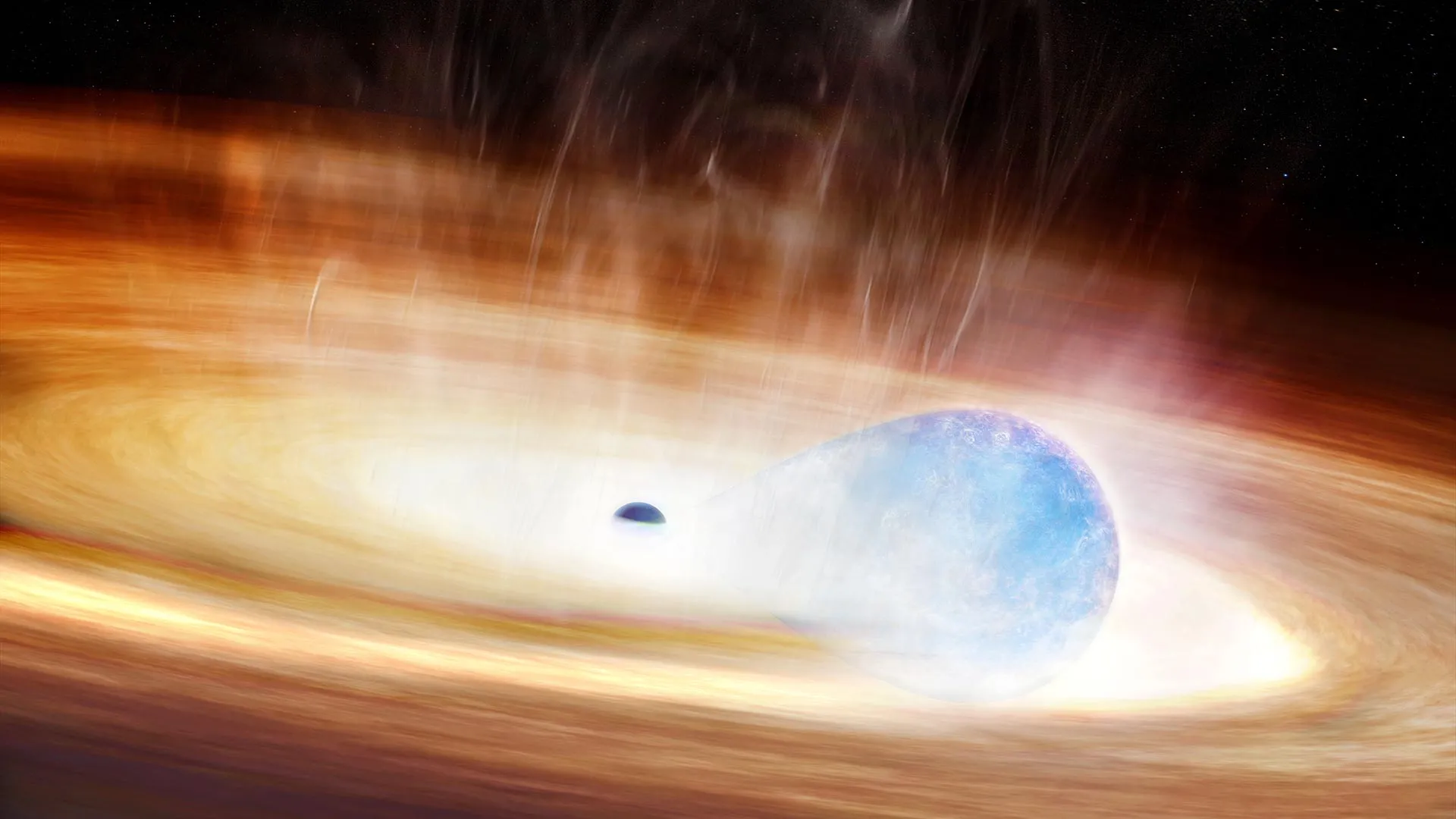
A star torn apart by a black hole lit up the Universe twice
- Astronomers used a UC Santa Cruz-led AI system to detect a rare supernova, SN 2023zkd, within hours of its explosion, allowing rapid follow-up observations before the fleeting event faded.
- Evidence suggests the blast was triggered by a massive star’s catastrophic encounter with a black hole companion, either partially swallowing the star or tearing it apart before it could explode on its own.
- Researchers say the same real-time anomaly-detection AI used here could one day be applied to fields like medical diagnostics, national security, and financial-fraud prevention.
The explosion of a massive star locked in a deadly orbit with a black hole has been discovered with the help of artificial intelligence used by an astronomy collaboration led by the University of California, Santa Cruz, that hunts for stars shortly after they explode as supernovae.
The blast, named SN 2023zkd, was first discovered in July 2023 with the help of a new AI algorithm designed to scan for unusual explosions in real time. The early alert allowed astronomers to begin follow-up observations immediately — an essential step in capturing the full story of the explosion.
By the time the explosion was over, it had been observed by a large set of telescopes, both on the ground and from space. That included two telescopes at the Haleakalāa Observatory in Hawaiʻi used by the Young Supernova Experiment (YSE) based at UC Santa Cruz.
“Something exactly like this supernova has not been seen before, so it might be very rare,” said Ryan Foley, associate professor of astronomy and astrophysics at UC Santa Cruz. “Humans are reasonably good at finding things that ‘aren’t like the others,’ but the algorithm can flag things earlier than a human may notice. This is critical for these time-sensitive observations.”
Time-bound astrophysics
Foley’s team runs YSE, which surveys an area of the sky equivalent to 6,000 times the full moon (4% of the night sky) every three days and has discovered thousands of new cosmic explosions and other astrophysical transients — dozens of them just days or hours after explosion.
The scientists behind the discovery of SN 2023zkd said the most likely interpretation is that a collision between the massive star and the black hole was inevitable. As energy was lost from the orbit, their separation decreased until the supernova was triggered by the star’s gravitational stress as it was partially swallowed the black hole.
The discovery was published on August 13 in the Astrophysical Journal. “Our analysis shows that the blast was sparked by a catastrophic encounter with a black hole companion, and is the strongest evidence to date that such close interactions can actually detonate a star,” said lead author Alexander Gagliano, a fellow at the NSF Institute for Artificial Intelligence and Fundamental Interactions.
An alternative interpretation considered by the team is that the black hole completely tore the star apart before it could explode on its own. In that case, the black hole quickly pulled in the star’s debris and bright light was generated when the debris crashed into the gas surrounding it. In both cases, a single, heavier black hole is left behind.
An unusual, gradual glow up
Located about 730 million light-years from Earth, SN 2023zkd initially looked like a typical supernova, with a single burst of light. But as the scientists tracked its decline over several months, it did something unexpected: It brightened again. To understand this unusual behavior, the scientists analyzed archival data, which showed something even more unusual: The system had been slowly brightening for more than four years before the explosion. That kind of long-term activity before the explosion is rarely seen in supernovae.
Detailed analysis done in part at UC Santa Cruz revealed that the explosion’s light was shaped by material the star had shed in the years before it died. The early brightening came from the supernova’s blast wave hitting low-density gas. The second, delayed peak was caused by a slower but sustained collision with a thick, disk-like cloud. This structure — and the star’s erratic pre-explosion behavior — suggest that the dying star was under extreme gravitational stress, likely from a nearby, compact companion such as a black hole.
Foley said he and Gagliano had several conversations about the spectra, leading to the eventual interpretation of the binary system with a black hole. Gagliano led the charge in that area, while Foley played the role of “spectroscopy expert” and served as a sounding board — and often, skeptic.
At first, the idea that the black hole triggered the supernova almost sounded like science fiction, Foley recalled. So it was important to make sure all of the observations lined up with this explanation, and Foley said Gagliano methodically demonstrated that they did.
“Our team also built the software platform that we use to consolidate data and manage observations. The AI tools used for this study are integrated into this software ecosystem,” Foley said. “Similarly, our research collaboration brings together the variety of expertise necessary to make these discoveries.”
Co-author Enrico Ramirez-Ruiz, also a professor of astronomy and astrophysics, leads the theory team at UC Santa Cruz. Fellow co-author V. Ashley Villar, an assistant professor of astronomy in the Harvard Faculty of Arts and Sciences, provided AI expertise. The team behind this discovery was led by the Center for Astrophysics | Harvard & Smithsonian and the Massachusetts Institute of Technology as part of YSE.
This work was funded by the National Science Foundation, NASA, the Moore Foundation, and the Packard Foundation. Several students, including Gagliano, are or were NSF graduate research fellows, Foley said.
Societal costs of uncertainty
But currently, Foley said the funding situation and outlook for continued support is very uncertain, forcing the collaboration to take fewer risks, resulting in decreased science output overall. “The uncertainty means we are shrinking,” he said, “reducing the number of students who are admitted to our graduate program — many of them being forced out of the field or to take jobs outside the U.S.”
Although predicting the path this AI approach will take is difficult, Foley said this research is cutting edge. “You can easily imagine similar techniques being used to screen for diseases, focus attention for terrorist attacks, treat mental health issues early, and detect financial fraud,” he explained. “Anywhere real-time detection of anomalies could be useful, these techniques will likely eventually play a role.”
Continue Reading
-
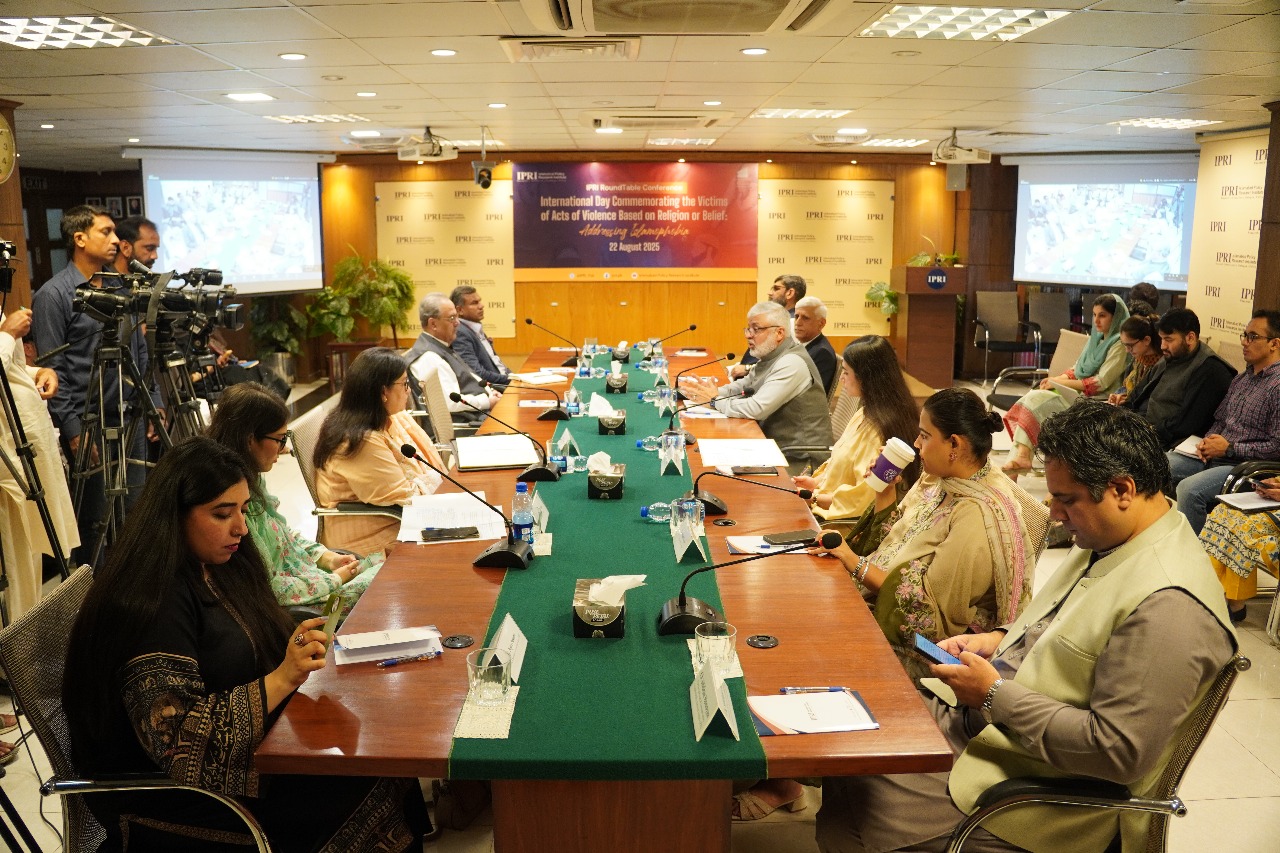
Experts call for global action against rising Islamophobia
– Advertisement –
ISLAMABAD, Aug 22 (APP):Speakers at a round table conference on Friday urged the international community, particularly the Muslim world, to take concrete legal, diplomatic and policy measures to counter the rising trend of Islamophobia across the globe.
The event, titled “The International Day Commemorating the Victims of Acts of Violence based on Religion or Belief: Addressing Islamophobia”, was organized by the Islamabad Policy Research Institute (IPRI), said a press release.
Pakistan’s Permanent Representative to the United Nations, Ambassador Munir Akram, in his remarks, called on the Organisation of Islamic Cooperation (OIC) to formally define Islamophobia and pursue legal remedies at international forums. He also stressed the need for Class Act Suits against perpetrators capitalising on extra-territoriality and universal jurisdiction through an institutionalised support of the OIC.
Amb Akram said that Pakistan has led from the front at international forums and its initiative to mark a day against Islamophobia was initially opposed vehemently by the world community.
Yet, he said that it was a huge success that March 15 was marked as International Day against Islamophobia and the resolution was carried unanimously. He also called for protecting the Islamic heritage sites in India and elsewhere and to provide legal assistance to victims of Islamophobia through the OIC forum.
IPRI President Lt Gen. (retd) Majid Ehsan called for a thorough discourse on the soaring phenomenon of Islamophobia, and said that it has led to marginalisation and a sense of otherness globally.
He regretted that Islam has not been understood in its true essence, and there is an industry that is thriving on Islamophobia to the benefit of those who are crafting this narrative.
Brig Dr Raashid Wali Janjua, Director Research IPRI, expressed his displeasure at the term “Islamophobia,” and regretted that Muslims too have come to accept it as fait accompli. He said, while Islam is a religion of peace, then as to why there is a phobia associated with it? He coined the term ‘anti-Abraham-ism” to address it more comprehensively and logically.
Chairman Institute of Policy Studies, Khalid Rehman, said that the quality of governance at local or international levels has also contributed to the spread of Islamophobia. He also underscored the need for a debate in the realms of public policy discourse as to why this terminology and sense of otherness started in the 1990s. He pointed out that the Cold War issues were capitalism and communism, which had nothing to do with Islam. He, however, pointed out that in the 1990s, the narrative of Islamophobia began and then spread very fast in the 2000s, and it has much to do with the Afghan Jihad and the 1979 Islamic Revolution in Iran.
“We too are to be blamed for this tendency because terrorism has been the foundation of Islamophobia. But there is no set definition of terrorism and anyone can mold the definition of it as they want. It has been established through media and movies, too, where Muslims are portrayed as terrorists. Terrorism existed before 9/11, too. And it used to be a crime that required investigation in the court of law. Now that the process of definition does not exist, then the issue of investigation remains a concern,” Rehman elucidated.
Dr Sadia Zahoor, an expert in public international law, touched upon the sensitivities of Artificial Intelligence (AI) and ChatGPT, and observed that its content surprisingly is Islamophobic. She also mentioned how AI in the US military is targeting Muslim communities, especially the Palestinians. She said that globalization has amplified, and it has evolved a structured outcome from powerful actors against Islam. “Portraying Muslims as villains in video games, and the binary of otherness that has been created on the web are cases in point,” she added.
Dr Ayesha Khan of Bahria University said that the rise of Islamophobia is a very critical area and it needs to be understood with the evolving trends of globalisation. “Globalisation has contributed to prejudice and has multiplied fears. Global media has been prejudiced and has created the perfect storm for the rise and spread of Islamophobia. It started from colonialism and orientalism. Globalisation today has amplified Islamophobia. It is not neutral at all,” she explained.
The speakers also referred to a growing sense of discrimination based on religion in India, and how Muslim-phobia has become a state-centric issue. They lamented the so-called terminology and worries of Islamophobia and in the West against the fastest-growing religion, i.e., Islam. They said that the world is witnessing the worst manifestation of Islamophobia in Gaza, where more than 60,000 Muslims have been massacred, and the champions of civilization are silent spectators. Likewise, it is ironic that freedom struggles in Kashmir and Palestine are equated with Islamophobia.
It was also questioned as to what Western values are: whether it is the protests seen on the streets of Western capitals against barbarism and genocide in Gaza, or the acts of violence that elites and governments are perpetrating.
Speakers stressed the need to develop media literacy and improve ignorance at indigenous levels in Muslim societies so that the misperception of Islam can be addressed in a better way, and the menace of Islamophobia can be negated successfully.
Continue Reading
-
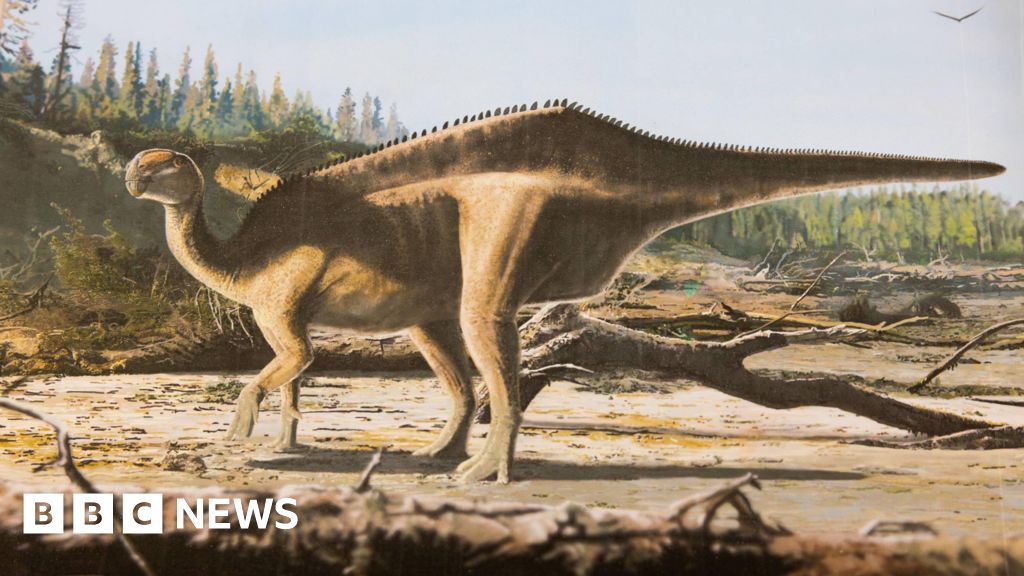
New ‘sail-backed’ dinosaur named after Dame Ellen MacArthur
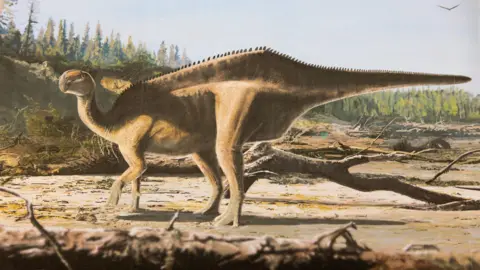 PA/James Brown
PA/James BrownAn artist impression issued by the University of Portsmouth of an Istiorachis macaruthurae. A new species of dinosaur that had an “eye-catching sail” along its back has been named after sailor Dame Ellen MacArthur.
The dinosaur, unearthed on the Isle of Wight, has been given the name Istiorachis macaruthurae with the first word meaning “sail spine” and the second referring to Dame Ellen’s surname.
The record-breaking round-the-world yachtswoman said it was a “huge honour”, adding: “The fact that the Istiorachis ‘sail’ could be likened to the sails I have spent so much of my life below was very touching.”
After being analysed it has now been officially named and described by island-based scientist Jeremy Lockwood, and is now on display at Dinosaur Isle Museum in Sandown.
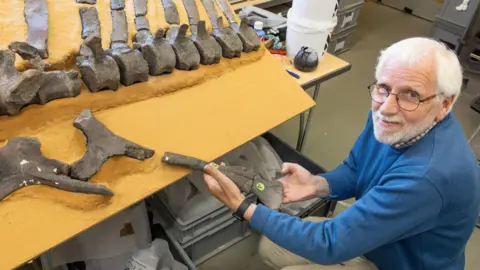 PA/James Brown
PA/James BrownJeremy Lockwood with the spinal column of an Istiorachis macaruthurae The medium-sized herbivore once roamed the floodplains of what is now the island’s south-west coast.
Its remains, which date back 125 millions years, were originally discovered by fossil hunter Nick Chase, who died of cancer in 2019.
Before Dr Lockwood’s analysis the fossils were assumed to have belonged to one of the two known iguanodontian dinosaur species from the Isle of Wight.
He said: “While the skeleton wasn’t as complete as some of the others that have been found, no-one had really taken a close look at these bones before.
“It was thought to be just another specimen of one of the existing species, but this one had particularly long neural spines, which was very unusual.
“It may have been used for display, much like a peacock’s feathers, possibly to attract mates or intimidate rivals.”
For the study, researchers compared the fossilised bones with a database of similar dinosaur back bones which allowed them to see how these sail-like formations had evolved.
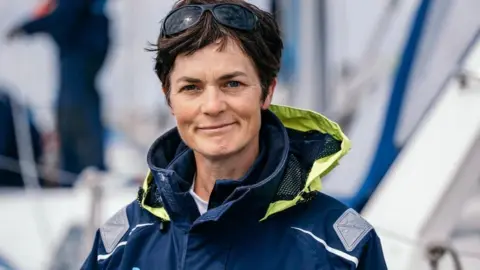 EMCTrust
EMCTrustDame Ellen MacArthur said it was “both extraordinary and a huge honour” to have the dinosaur named after her Dame Ellen, founder and patron of the East Cowes based charity the Ellen MacArthur Cancer Trust, said: “It is certainly not an everyday occurrence to be asked if a newly discovered dinosaur could reference your name in its title.
“I was somewhat taken aback when this conversation began, but felt hugely privileged to be asked.
“The fact that the Istiorachis ‘sail’ could be a-likened to the sails I have spent so much of my life below was very touching.
“It is both extraordinary and a huge honour that a creature living 125 million years ago could possibly be linked to my family name.”
She became the fastest person to sail solo non-stop around the world in 2005.
Continue Reading
